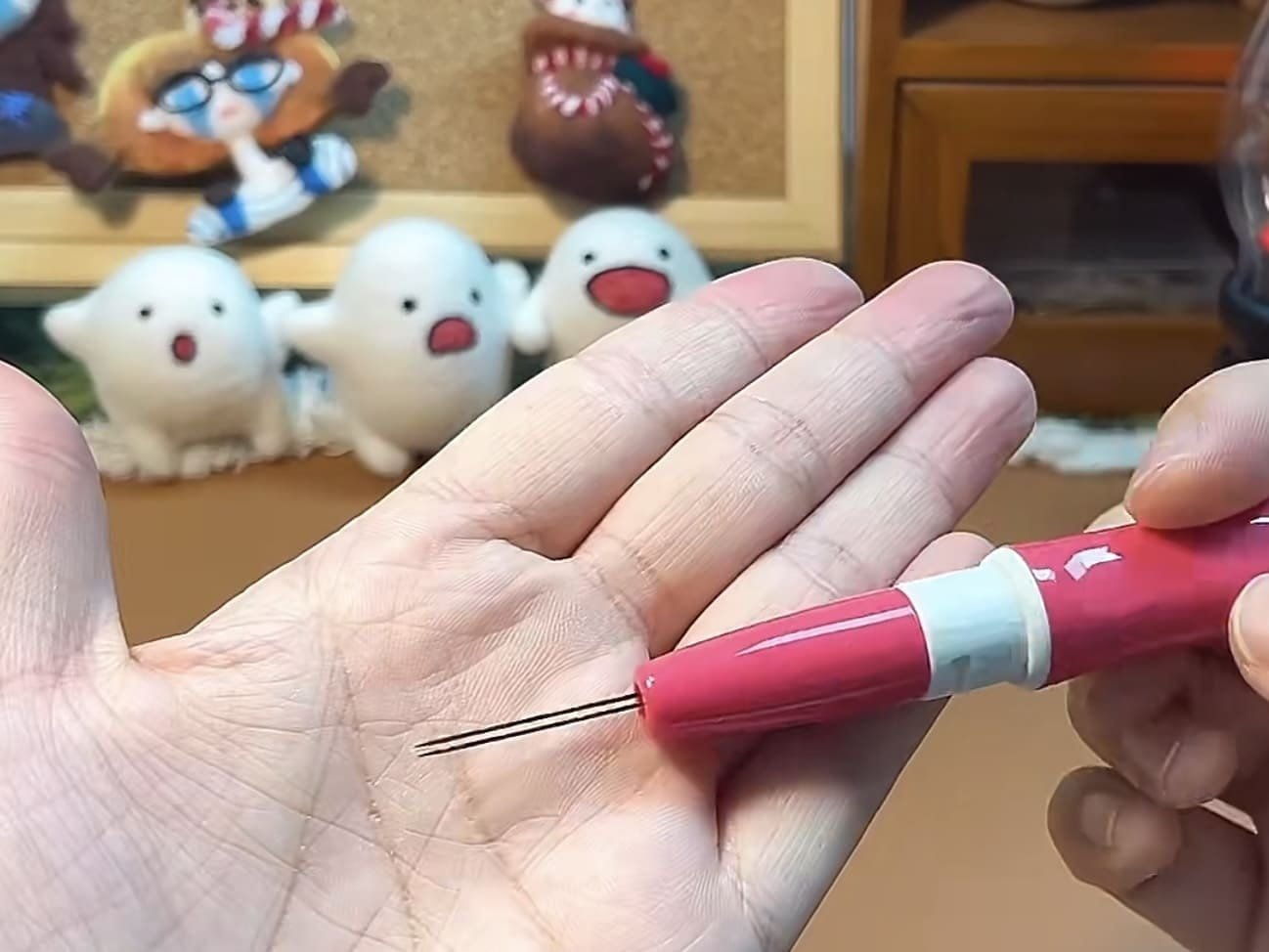Which Needle Type is Most Suitable for Felting with Needle?
The quality of your needle felting experience heavily relies on the right equipment, and the felting needle is the most crucial tool of all. With numerous options available, selecting the ideal needle can be overwhelming. Let’s examine the top options, their uses, and how to choose the perfect felting needle set for your upcoming project.
Which Needle Type is Most Suitable for Felting with Needle?
Why the Needle Matters
In needle felting, the needle isn’t just a tool—it’s your wand. Its barbs catch and tangle wool fibers as you poke them into a durable felting foam pad. The size, shape, and barb design decide how fast you work, how smooth your wool felt gets, and how much detail you can add. Pick the wrong one, and you’re either fighting lumpy wool or snapping needles left and right. So, let’s figure out which one’s the best fit.
Understanding Needle Gauges
Different gauges of needle felting needles indicate their thickness, with lower numbers representing thicker needles and higher numbers indicating finer needles. The options are as follows:
- 36 Gauge (Coarse): A thick and durable needle ideal for quick felting.
- 38 Gauge (Medium): The versatile middle option.
- 40 Gauge (Fine): A thin and delicate needle perfect for precise work.
Each has its sweet spot, depending on your project.
Top Needles for Needle Felting
Let’s explore the top needles for needle felting, their ideal uses, and what sets them apart.
36 Gauge: The Speedy Shaper
- Best For: Roughing out big shapes—like the base of a 3D needle-felted toy or a felted pumpkin.
- Why It Rocks: Its thick build and deep barbs grab lots of core wool batting at once, felting it down quickly.
- Downside: Too rough for fine details—think lumpy surfaces if you overdo it.
Use a coarse 36 gauge felting needle when starting a project with bulk dyed wool and need to pack it tight quickly.
38 Gauge: A Versatile Tool for Various Projects
- Ideal For: Many different tasks, such as creating felted creatures or crafting seasonal needle felting presents.
- Advantages: Combines quickness and evenness—helps to felt Merino wool into a tidy result without excessive force.
- Disadvantage: Not the speediest for large quantities or the most precise for small adjustments.
A 38 gauge star-shaped felting needle (with extra barbs) is a fan favorite—versatile enough for a needle felting kit for beginners or a pro’s stash.
40 Gauge: The Precision Pro
- Ideal Use: Adding intricate details, such as the delicate fur on a hand-felted animal or the textured elements on a piece of wool jewelry.
- What Sets It Apart: Its slender design and accuracy make it perfect for refining surfaces and adding a touch of sophistication to colored wool fibers.
- A Word of Caution: While excellent for small, detailed work, it’s not suited for large areas and requires gentle handling, as excessive force can damage it.
For a professional finish on your handmade needle felting creation, opt for a high-quality 40 gauge needle.
Exploring Unique Shapes: Moving Past the Fundamentals
Gauge isn’t the only game in town—needle shapes tweak how they work:
- Star-Shaped: Four-sided with more barbs, like the 38 gauge star-shaped felting needle. Grabs more wool per poke—great for speed and detail.
- Spiral (Twisted): Barbs twist around, cutting less and felting tighter. Perfect for 3D needle felting like a felted animal.
- Triangular: The classic—three sides, solid all-around for wool roving.
For sculpting felted toys, a spiral felting needle can be a secret weapon.
Best Picks for Your Project
The ideal needle depends on your project’s specific needs:
- For larger, thicker pieces like a wool felted ghost, a 36 gauge needle is suitable for core wool bases.
- A 38 gauge needle is versatile for projects such as felted gifts or flat felt fabric.
- When it comes to intricate details, a 40 gauge needle is perfect for refining colored wool felt.
Smart strategy: Invest in a versatile felting needle set that lets you change gauges on the fly.
Criteria for Identifying Quality: Key Considerations
A good needle isn’t just about gauge—it’s built to last:
- Durability: Cheap needles snap fast; look for strong steel, like in a Woohuu felting needle set.
- Comfort: An ergonomic felting needle handle with 5-needle holder saves your hands on long sessions.
- Bulk Options: A replacement felting needles bulk pack (100pcs) keeps you stocked.
Check craft stores or search “best felting needles for beginners” online for reliable picks.
The Needle Tale I Always Share
When I started, I grabbed a 38 gauge Woohuu needle for a felted bird. It handled the core wool batting body and the dyed wool feathers like a champ—took me a couple hours, no fuss. Later, I tried a 40 gauge for the beak—slow but worth it for that crisp edge. The thick 36 gauge? Saved it for a chunky felted ornament. Point is, one needle won’t rule them all—but they each have their moment.
Does Speed Change the Game?
Quicker instruments like an electric needle felting device can be used with any size but are most effective with 38 gauge for general tasks. These tools are not traditional needles, but they can speed up the process of working on seasonal needle felting gift sets, with the choice of gauge determining the level of detail.
So, What’s the Best Needle?
What’s the best needle for needle felting? It depends. The 38 gauge is your MVP—versatile, sturdy, and beginner-friendly for needle felting patterns. Need bulk? Go 36 gauge. Craving detail? Grab a 40 gauge. Better yet, snag a felting needle set and play with them all—Merino wool, organic wool roving, whatever you’ve got. Poke around, find your fave, and watch your felted animals come to life!
